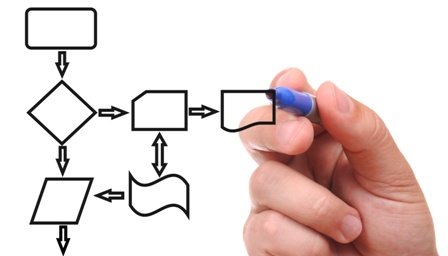Is that even possible?
If you´ve been here long enough, some time ago I talked about mixing science and art. This is one of the best examples(Notice how I said ONE, spoilers for next post).
First let´s make things clear. Software design usually refers to the problem solving through an algorithm design(software solution). This is caused because on paper it sounds so nice(it always does) but in real life, machines have physical limitations(Memory, RAM, processing power, etc.) and a lot of times, careful planning is needed in order to make efficient what we have.

And that is what software design is at a basic level. The planning of how to implement software into a problem and create a solution.
That sounds so good, how do I do it?
Well first, it is expected that when you are in this phase you should already have done the analysis of the problem at hand(actually software design is part of the implementation step). With that in mind the first suggested step is to build a “prototype that works” meaning something either really simple or really complex that solves the problem.From there on it´s just adjusting you prototype to the limitations you have. As a sort of guideline, it is recommended that one process should not take more than 15% of the resources. Actually, there are quite a lot of suggestions, the best of them being Davis´s principles for software design which are as follows:
- The design process should not suffer from “tunnel vision.” A good designer should consider alternative approaches, judging each based on the requirements of the problem, the resources available to do the job.
- The design should be traceable to the analysis model. Because a single element of the design model can often be traced back to multiple

 it is necessary to have a means for tracking how requirements have been satisfied by the design model.
it is necessary to have a means for tracking how requirements have been satisfied by the design model.
- The design should not reinvent the wheel. Systems are constructed using a set of design patterns, many of which have likely been encountered before. These patterns should always be chosen as an alternative to reinvention. Time is short and resources are limited; design time should be invested in representing truly new ideas and integrating patterns that already exist when applicable.
- The design should “minimize the intellectual distance” between the software and the problem as it exists in the real world. That is, the structure of the software design should, whenever possible, mimic the structure of the problem domain.
- The design should exhibit uniformity and integration. A design is uniform if it appears fully coherent. In order to achieve this outcome, rules of style and format should be defined for a design team before design work begins. A design is integrated if care is taken in defining interfaces between design components.
- The design should be structured to accommodate change. The design concepts discussed in the next section enable a design to achieve this principle.
- The design should be structured to degrade gently, even when aberrant data, events, or operating conditions are encountered. Well- designed software should never “bomb”; it should be designed to accommodate unusual circumstances, and if it must terminate processing, it should do so in a graceful manner.
- Design is not coding, coding is not design. Even when detailed procedural designs are created for program components, the level of abstraction of the design model is higher than the source code. The only design decisions made at the coding level should address the small implementation details that enable the procedural design to be coded.
- The design should be assessed for quality as it is being created, not after the fact. A variety of design concepts and design measures are available to assist the designer in assessing quality throughout the development process.
- The design should be reviewed to minimize conceptual (semantic) errors. There is sometimes a tendency to focus on minutiae when the design is reviewed, missing the forest for the trees. A design team should ensure that major conceptual elements of the design (omissions, ambiguity, inconsistency) have been addressed before worrying about the syntax of the design model.”
So, is it art or not?

Image taken form here
Well, it depends on your perception of art, but we´re not here to discuss that. In my personal opinion this is the more artistic process of the whole software engineering because this is the part where you can really put your personality into the work, no two designs are the same. That is because as we think different, we come up with different solutions to the same problems. So keep on working, this is going to get fun. And always remember that when you mix science and art, is when wonder comes up.


